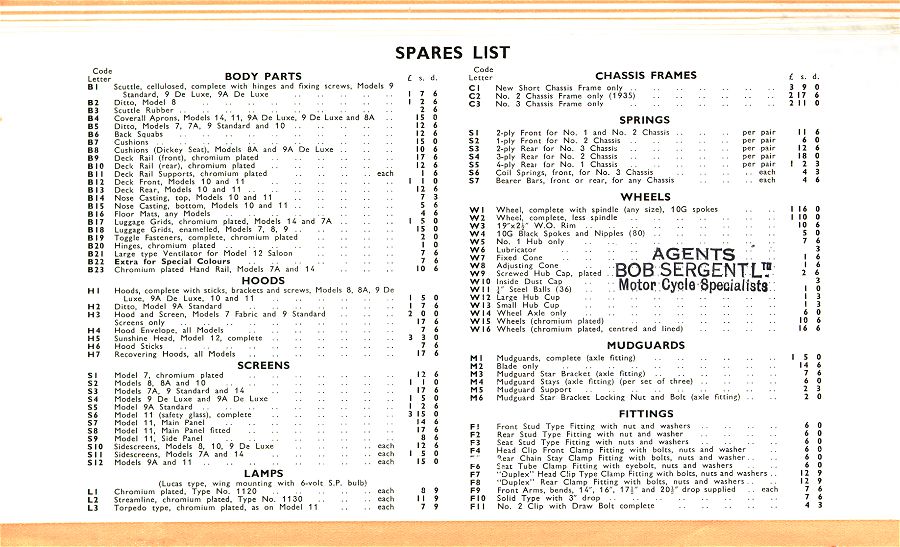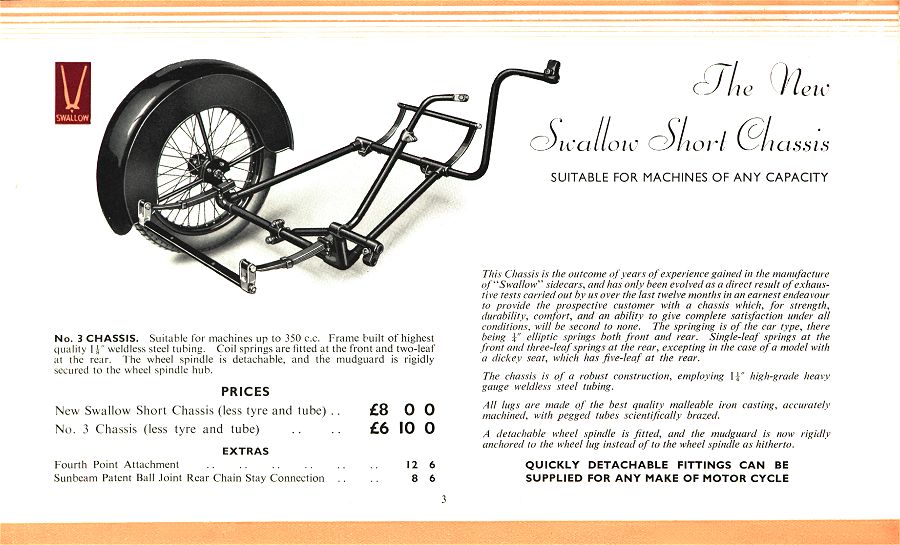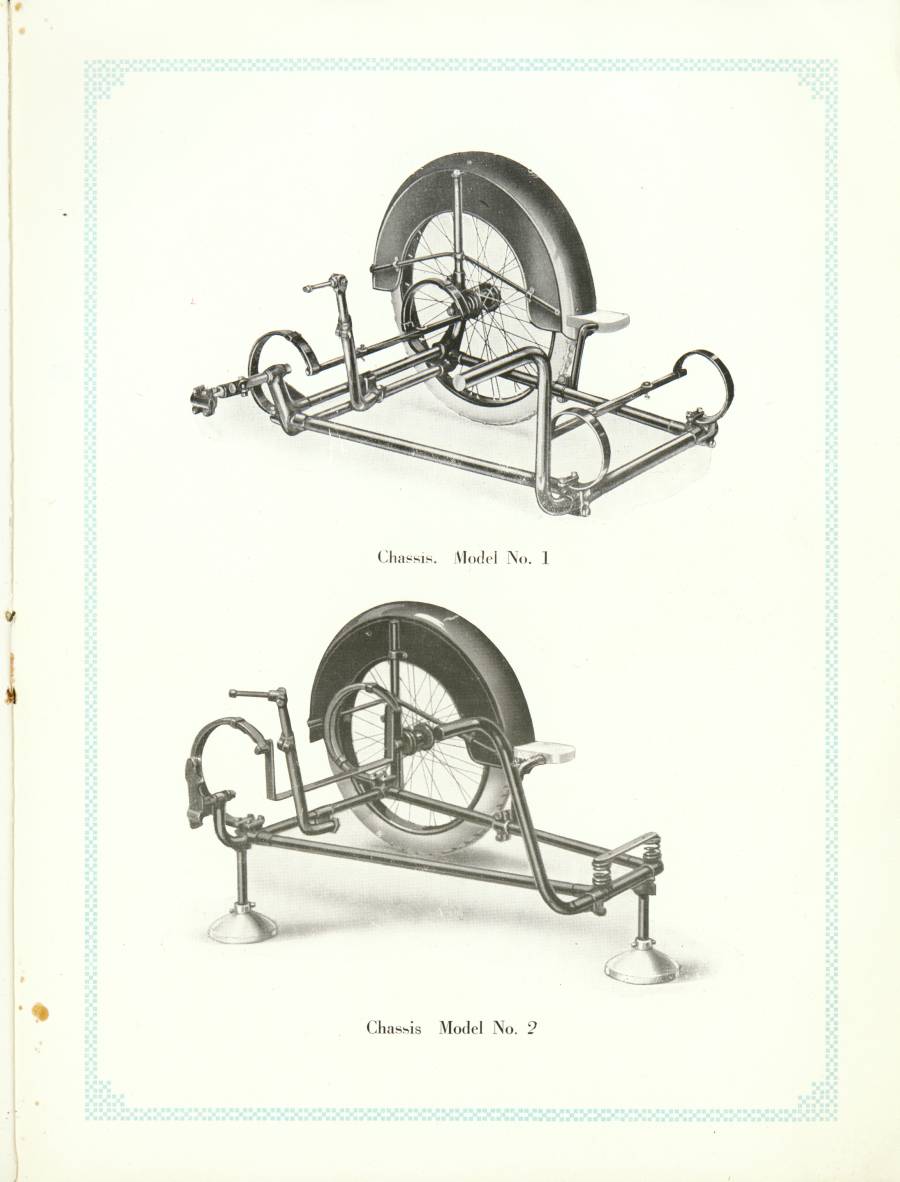First guess, it looks to me like coils under the body, and elliptical at the rear axle?
I think I see an elliptical spring reflected in the shiny body.
That’s what I thought too. I’m going to swap them out and see how it look. Haven’t taken any measurements yet, but looks like the body holes will not align with the elliptical-coil combo. I’ll post a separate reply on the body, which also does not look right.
Supposed to show my Mark IV at The Amelia Concours on Sunday. Rain predicted to start Friday and continue every day for 12 days, so I may not go. I’ve done my share of car shows in the rain…not fun!
Now let’s discuss my body. the mounting holes line up perfectly with the leaf spring setup presently on the chassis. There are no other mounting holes, or any that have been patched. The body is sheet metal over a steel frame, not aluminum frame. But it’s rust-free. Again, in comparison, I have an early 1960s scooter sidecar body with practically the entire bottom rusted away…like you’d expect a floor pan to look like in a rust-belt car. Other than a few minor scratches, the body is surprisingly intact…no dents, dings, etc. Everything is coated with gloss black paint, inside and out. .
My body shape does not have the slender shape of most SS octagonal shaped bodies. Its bulbous, octagonal zeppelin shaped nose is close to pictures I’ve found of other bodies which claim to be Swallow. However, at the cockpit opening, the body transitions to a square shape, then further morphs to a semi-duck tail, with luggage straps on the rear deck. It appears there should be a nose cap, but there is none. I have not found pictures of anything similar by SS or any other make. I also found an article which stated Swallow Sidecar Company was Watsonian’s (another sidecar manufacturer,) biggest customer. Does this mean when SS got behind on bodies, they would buy some from Watsonian or some other make? If so, could my body be one of those?
Here are pictures of others with a bulbous nose, which also claim to be Swallow. Also, an article about SS sidecars from a 9 November 1922 “The Motor Cycle” magazine showing a picture of one with a bulbous nose. The narrative is blurry, but I’ve found it elsewhere and copied it here as well.

QUOTE
NEW SPORTING SIDECARS.
Aluminum Zeppelin-shaped Bodies for Lightweights or Heavyweights.
OWNERS of sporting sidecar outfits have long been regarded as a somewhat selfish class, thinking more of the light weight of their sidecars than the comfort of their passengers. But it has frequently been pointed out in these columns that a sidecar body in keeping with the “sporting” character of the machine and its driver need not necessarily be uncomfortable.
Sidecar manufacturers are beginning to realize this, and at least two comparatively little-known sidecars will in 1923 be all that is required by the passengers.
The first of these is the Swallow, which is produced in Blackpool by the Swallow Sidecar Co., Bloomfield Road, and will be at the Olympia Show. From the illustration it will be seen that, while retaining the favoured Zeppelin outlines, the Swallow has the roominess and equipment of the popular touring types.
Constructed of polished aluminum, it permits the seating accommodation to be in the form of a cock-pit, having a high back rest which supports the passenger’s shoulders, while a coupé hood is provided for the occasions when the driver be-best [sic] of it. This coupé hood is detachable, and is supported on a single stick which normally lies horizontally behind the bulbous back. The chassis is sufficiently strong for use with the largest machines or the popular 500 c.c. types, and the equipment includes a cover-all apron, lamp, polished aluminum disc and step.
The Motor Cycle, November 9th, 1922.
ENDQUOTE
I think at least some of this is beginning to make sense. The frame came with 2 wheels…one in nice, original condition, and a second what looks like a brand new, NOS, outer rim, hub, spokes, and nipples…a do-it-yourself wheel kit. The original one had inner and out bearing races, but missing some of the bearing balls. I’ve never seen a bearing like this. There is no bearing ball retainer/cage. They are held in the races by the tension on the axle nut. All 4 bearing races look to be in excellent condition. Each bearing requires 16 balls. It came with a total of 17 balls between the 2 bearings. There are no numbers or I.D. on the bearing races. I took everything to NAPA, hoping they could take some measurements and pull them off the shelf. No dice. The counter tech said it looks like an INA bearing, part no. A22/44-XL. They referred me to a bearing shop in Orlando. Before going there, I did a search online, and found the bearings…almost $200. I measured the bearing balls…they are exactly 1/4-inch in diameter. I hit the internet again, and and hit a jackpot. I found 1/4-inch stainless steel balls by the thousands. They’re used as shot in wrist rockets. I ordered a bag, and viola, now have complete bearings.
I swapped the flat half-leaf springs on the rear for the elliptical ones. I removed the front flat half-leaf springs, and replaced them with the coils. The chassis now looks like Chassis #2 which I posted above. The only thing missing is the front cross bar between the coil springs and the rear cross bar between the elliptical springs.
Now for the body. It appears that at sometime in the past 99-years, someone highly modified the body to make it fatter in the nose, wider and deeper in the cockpit area, and added the flat tail to carry luggage. I have no idea why someone would have done that, other than perhaps a need to carry a ‘more-bulbous’ passenger. ![]() The steel sheet metal was riveted and welded to an internal flat-frame or varying dimensions. Today I got all the sheet metal removed. I should have taken pictures, but didn’t. Hopefully I’ll remember to take some tomorrow. Next I’ll clean the body frame up with a grinder and wire wheel, then start figuring out how I’m going to convert the body frame back to it’s original slender shape and dimensions.
The steel sheet metal was riveted and welded to an internal flat-frame or varying dimensions. Today I got all the sheet metal removed. I should have taken pictures, but didn’t. Hopefully I’ll remember to take some tomorrow. Next I’ll clean the body frame up with a grinder and wire wheel, then start figuring out how I’m going to convert the body frame back to it’s original slender shape and dimensions.
I’m a little confused of how the tail is supposed to look on the octagonal body. Obviously mine was completely removed and discarded to add the duck-tail. The later model 5-sided body has a pointed tail, but the earlier 8-sided body tail appears to be bobbed. So far, I’ve not found a good, clear picture of it. Here’s all I’ve got to work with so far.


.
.
Okay. It’s starting to make some sense. The octagonal-shaped body panels are 8-inches wide at their widest point. That means the flat floor of the body is only 8-inches wide…meaning the seat bottom was that width. I’m sure that was a tidy fit for many wide-arse Brits. Likewise, the slender nose didn’t leave a lot of leg and foot room. The modification of this body converted the cockpit floor to 18-inches wide. I’m surprised the original design lasted as long as it did, until they came out with the pentagonal-shaped body several years later, which allowed a full-width cockpit floor. Obviously, that’s why this body was modified with a full-width body, and a bulbous nose, to accommodate ‘normal-sized’ passengers.
I drilled out over 100 rivets, and ground off as many welds removing the sheet steel body. Once down to the bare body-frame, I can see hundreds of old rivet holes (some still with ground-off rivets,) where the body had been previously reskinned, perhaps several times. The good news is it now weighs about 1/3 of what it did with the sheet steel skin.
Next step is determining the best route to take to restore the body frame to it’s slender nose and Zeppelin shape, before I can even begin thinking about reskinning it in aluminum.
Pictures aren’t that great due to mid-day shadows.
I’m open to comments, suggestions, etc., as I really want to do this right.
I don’t know if this picture provides any useful information for you, but in the book I scanned it from the sidecar is described as a Swallow Scrapper. That may have meant that it was always getting into “scraps”, i.e. races.
Thanks Rob. The chassis looks similar to mine with the elliptical rear springs and coil fronts. But the frame appears to be narrower in the front. From what I’ve been able to gather, there were several different variations offered. That’s the Model 6 Competition body which Kennedy’s book identifies as being available in 1927.
That is standard size for pedal cycle rear wheel and crank bearings…which makes sense.
The bearing setup is very likely to be the same as pedal cycle axles that use cup and cone.
Hadn’t thought of that. Thanks.
A lot happening since my last post 3 weeks ago. I had been working on the body frame, but in question on how the original tail of an octagonal body should look. I contacted the Jaguar Heritage Trust research department, and after some research assistance from them, was advised all SS sidecar bodies frames had a metal skin over an ash frame. This would make sense, as most pre-war car bodies were constructed this way. This means the body which came with my sidecar is not a modified SS, so I’ve stopped work on it.
I contacted several others much more SS sidecar-knowledgeable than me, including Ed Nantes, Steve Kennedy, and several others who may not wish to be named. All either own SS sidecars or are familiar with them. I’ve been advised my SS sidecar chassis is most likely not a Model No. 2 as I had suspected, but is probably a Model No. 3. There only seems to be one minor difference between the two basic chassis. However, once that difference is recognized, the obvious difference between them is the use of half-leaf springs, in lieu of the elliptical or an elliptical-coil spring configuration. This would mean it was probably made later than 1925. No one seems to know when production of the Model No. 3 chassis began, other than it being sometime between 1928 and 1936. By then the octagonal-shaped bodies seem to have been discontinued. So far, I have not been able to run down any information on chassis or body models between 1929 and 1936. But by 1936, there did not appear to be any SS sidecars using the Model No. 2 chassis.
Steve Kennedy told me that there were many different body styles offered. The longer they were making sidecars, the more body styles were being offered. He said that as they were all hand-assembled, it may have been difficult to find any 2 which were exactly alike.
So I’m still in a holding-pattern while I continue research. If it’s finally settled that I have a Model No 3 chassis, then I will no longer be pursuing an octagonal-shaped body. This is disappointing to me, as that’s what I wanted. However, with a later-style Model No 3 chassis, there are many more body options for me to select from.
It appears that in 1936 they had 11 different bodies.
https://www.jag-lovers.org/brochures/sw_sidecar_36.html
But in 1928 only 4, with options.
https://www.jag-lovers.org/brochures/sideconn_328.html
Looking for info from 1929-1935. Mine is probably from within that range.
The 1936 brochure is screwed up. The chassis image shows a Model No. 3, but the verbal description of it doesn’t match, and describes a Model No. 2.
And again, I’m having second thoughts. Per the below diagrams, once all the bolt-on, interchangeable suspension and attachment parts are disregarded, there appears to only be 2 differences between the Model No. 2 basic chassis, and the Model No. 3 basic chassis. I have circled them on each diagram. Mine appears to have the rear center attachment of a Model No. 2, and the rear inner attachment of a Model No. 3. As you can see in the diagram, the rear center attachment on the Model No. 3 chassis is removeable. Mine is not. On mine, these parts are all fixed and not removeable or interchangeable. The only way to remove or change them on my chassis would be to cut them off and weld the new ones in place. There is no evidence of this having been done. It appears my chassis is a cross between a Model No. 2 and a Model No. 3. Could mine have been a test mule or a transitional chassis between the two?
Hi George,
The brochure page that Rob posted seems to describe, and price, two different chassis - the No.3 described on the left, and the “New Swallow Short Chassis” described on the right. The picture matches the short chassis description. It seems your front springs have more than one leaf, but the description says the are single leafed.
Regards,
Clive.
Yep, George, this delightful research is as much stumbling in the dark for the rest of us as for you.
One thing we’ve learned from our research on later models is this: It may be a fatal error to assume that all No.2 or all No.3 chassis were the same from beginning to end of the production run. Some evolution is often found.
I noticed in the 1936 brochure that there is a parts list, including both frames and spring specifications, which may be useful in trying to identify what you have.
















